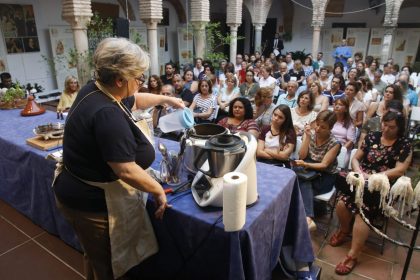Interview with Marta Puig Quixal, Head of Caminos de Sefarad

Jguideeurope: What is the Caminos de Sefarad’s main mission?
Marta Puig Quixal: A coordinated action among many cities all over Spain to recover the traces of the Sephardic culture. An essential culture within all our different roots but despite this reality, it remains the most unknown. Therefore, the main mission focuses on the research of our own Spanish History through the history of the families that once lived all around the cities.
Another key mission is to connect physically and emotionally with the Sephardim around the world. Those who maintained this culture and tradition alive during the five centuries it was originally hidden and forgotten.

What will be the main theme of this year and what events are organized around it?
We have been developing three big areas of work: First, designing Cultural routes. Which was done by getting our cities ready to be visited, marking the places, forming our guides, promoting our destinations. Then, we have developed an Educational project, providing tools to teachers which enable them to have a simple but effective idea of who were the Sephardim. Finally, we’re focusing our efforts on the Cultural presence. This is encouraged by the organization of permanent cultural events, which is a great way to connect with Spanish citizens. It is probably time to intensify the institutional work as we accidentally have become the ones who represent a culture by the places where they lived. We are the streets, the doors, the landscapes of many diasporic families.

Can you share a personal anecdote about a previous event?
I prefer to highlight how emotional and touching my job is, even for a non-Jewish like me. I go abroad often, spending time and efforts on promotional and cultural activities. I always look forward at the great chance to meet the Sephardic communities wherever it may be. I personally think that Sephardic Diaspora constitutes one of the most incredible historical events of all times. And the feeling of belonging to a place (Spain), that ancient generations left, sorry, were forced to leave centuries ago, is unbelievable.

Which particular place related to Spanish Jewish Heritage do you feel should be better known?
It is impressive that more than five centuries trying to erase every Jewish sign on our heritage and history was not enough to discourage the enthusiasm of rediscovery by Jews. If we all agree the Jewish preserved heritage today is not one of the most impressive from a preservation point of view, we have to admit that the storytelling connecting all our destinations makes it highly emotional, exotic. It all becomes very interesting for both national and foreign visitors. Any of the 21 quarters that we have recovered deserve a visit, and all should be better known.
